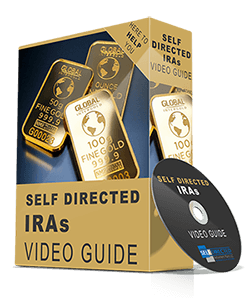What Is an IRA Rollover?
An IRA rollover refers to the process of transferring funds from one Individual Retirement Account (IRA) to another without incurring taxes or penalties. It allows individuals to move their retirement savings from one financial institution or IRA type to another, providing flexibility and the opportunity to consolidate or adjust investment strategies.
The main purpose of an IRA rollover is to maintain these assets in a tax-deferred state. The funds from the rollover IRA can be moved to a new employer’s retirement plan if desired but that generally limits your future investment options.
How an IRA Rollover Works
IRA rollovers are usually from an employer-sponsored retirement account such as a 401(k) rollover to IRA. It can also be an IRA-to-IRA transfer. When people change jobs, they prefer to move their 401(k) or 403(b) assets into an IRA. Also, when people want better investment choices for better benefits, they want to make the switch to an IRA.
Direct IRA Rollover
For a direct rollover, the account holder asks the plan administrator to write a check and sent it to the IRA directly. However, in IRA to IRA transfers, the trustee of one plan sends the rollover amount to the trustee of the other plan.
If an account holder gets the check for the funds in their retirement account or an IRA, they must deposit the funds into the new IRA within 60 days. If the 60-day deadline is missed, then the amount will be considered an early distribution, and income taxes / IRS penalty can be charged.
Indirect IRA Rollover
In an indirect rollover, the assets are transferred from a tax-deferred 401(k) plan to a traditional IRA. A check of the retirement funds is given to the employee that has to be deposited into their personal account. The employee then has to redeposit the funds into the new IRA within the 60-day period to avoid taxes and penalties.
What are the Features of a Rollover IRA?
With a rollover IRA,you can do the following:
- Choose your investment vehicle from a broad range of investment options
- Enjoy the tax-deferred status of your retirement savings
- Consolidate other qualified accounts into an IRA
However, if you are planning to make a withdrawal before you turn age 59½ or if you want to borrow against your retirement account, you should consider other retirement account options.
Benefits of IRA Rollover
You may want to open a rollover IRA, if you want to:
- Access a vast range of investment options
- Save alongside with your employer-sponsored 401(k) plan
- Become self-employed
- Simplify tracking and managing your multiple retirement accounts by consolidating them
How do you do an IRA Rollover?
IRA rollover is a simple process. You can do it in 5 simple steps:
- Evaluate the type of IRA account(s) you need: If the savings in your workplace retirement plan is pre-taxed, you’ll likely want a traditional IRA. If your workplace plan is a Roth account, then you must consider a Roth IRA for the rollover.The difference between traditional IRAs and Roth IRAsis their tax treatment:
Traditional IRAs offer tax deductions on contributions, but withdrawals in retirement are taxed. If you rollover to a traditional IRA, you don’t pay taxes on the amount rolled over
Roth IRAs do not offer immediate tax deductions. This means if you roll over to a Roth, you will have to pay taxes on the rolled amount, provided you are rolling over a Roth 401(k). The advantage of Roths is that after age 59½, withdrawals are tax-free.
Consider these three things:
- If you want to maintain the tax treatment of a 401(k), a traditional IRA rollover makes sense.
- If you want to reduce the tax bill in retirement, a Roth IRA may be a good option. However, you may have to pay tax if you rollover to Roth, unless your old retirement account was a Roth 401(k).
- If you want the cash from the rollover to pay for the tax bill today, a Roth IRA is not a good option as it can make you vulnerable to more tax complications.
- If you don’t have an IRA, open one: If you don’t have an existing IRA for your rollover, you need to open a new IRA at a financial institution of your choice.
- Ask your plan administrator for a direct rollover: Your plan administrator will give a form to you to fill out. In a direct rollover, your funds are directly transferred to your IRA.
- Collect relevant information from your IRA provider: You’ll be required to provide the necessary information to your plan administrator about transferring your assets to the IRA. That’s why you need to have the right information from the financial institution where you hold your IRA.
- Submit the filled form to your plan administrator: Your plan administrator will process your request. It may take a few days for the assets to be transferred to your IRA.
You also have an option to do an indirect rollover, but if the option of doing a direct rollover is available to you, then an indirect rollover has a limited appeal. An indirect rollover process involves the following steps:- Your plan administrator liquidates your holdings and sends a check in your name.
- The administrator withholds 20% of your funds for taxes and sends it to the IRS
- You have to deposit the funds plus the 20% withholdings into your IRA to complete the rollover.
- When the IRA receives the rollover amount, the IRS will return the safeguarded 20%.
How to choose Rollover IRA Investments
Once the IRA rollover is completed, you need to select your investments. With an IRA, you have a vast number of investment options as compared to 401(k).
- Based on the asset allocation, you can select a few low-cost index mutual funds or ETFs.
- If you were invested in a target-date fund in your 401(k), you could invest in a similar fund at a broker.
- If your new IRA account is opened at a robo-advisor, the computer’s algorithms will select and rebalance your investments based on the answers you provide to the questions on timeline and risk tolerance.
IRA Rollover Rules and Limits
Consider these rules while performing an IRA rollover.
- The 60-day rule
When you do an indirect rollover, you have 60 days to deposit the funds in addition to the tax amount that is withheld in the rollover IRA. If you fail to complete the rollover within 60 days:The distribution will be considered as an early distribution, and taxes on that amount will be levied, plus an early withdrawal penalty of 10% will be charged. - One IRA rollover per year
If the rollover is from a traditional IRA, SIMPLE IRA, or SEP-IRA to another IRA, you can do so once per rolling 12 months. If you fail to follow this rule:- Every rollover after your first is subjected to taxes on the distribution and a 10% early withdrawal penalty if you have not reached the age of 59 ½;
- There could be a penalty for over-contributing to your IRA if you deposit the funds back into your brokerage account that are ineligible for a rollover.
However, this rule doesn’t apply to:
- Rollovers to or from employer-sponsored retirement plans.
- Rollovers from a tax-deferred IRA account to a Roth account. Such rollover is called IRA to Roth conversions.
- The same-property rule
The same-property rule states that when you complete a rollover, you have to contribute the same property that you withdrew from your original brokerage account. For example, if you get a check for an indirect rollover, and you invested the distribution proceeds in stock and then transferred that stock into another retirement account, you’ll be violating the same-property rule.
If you violate the same-property rule:The distribution is considered as a normal withdrawal. This means you’ll have to pay an early withdrawal penalty of 10% plus taxes.
- Distributions not eligible for rollover
Some distributions from your employer-sponsored retirement plan are not eligible for an IRA rollover. For example, RMDs, loans, and hardship withdrawals are not eligible for a rollover into an IRA. It may make sense to rollover a Roth 401(k) to a Roth IRA because Roth 401(k)s have required minimum distributions, but Roth IRAs do not. - Limits
There is no limit on the amount nor the number of rollover IRAs you can have. A rollover IRA doesn’t affect your contribution limit too. However, managing multiple IRAs can be difficult. Moreover, you actually don’t need more than one IRA. So, you can rollover funds from various accounts into the same IRA and also make contributions to the same IRA.



